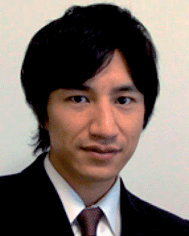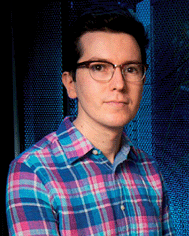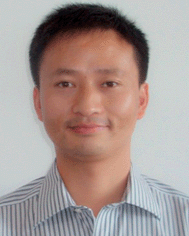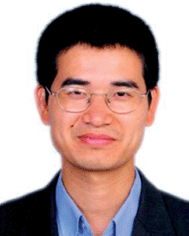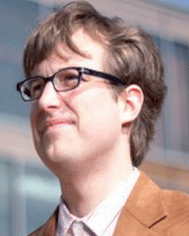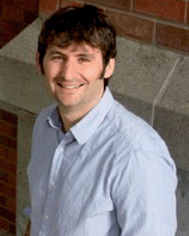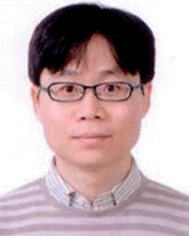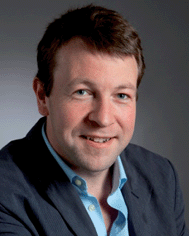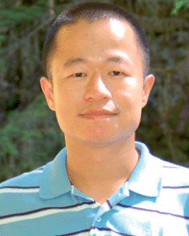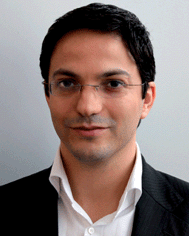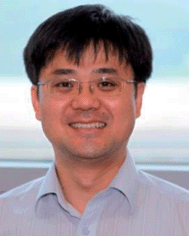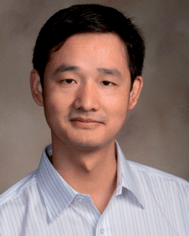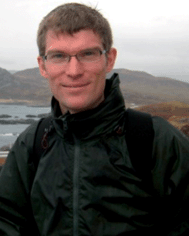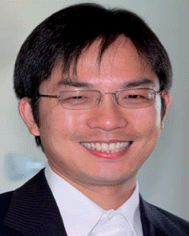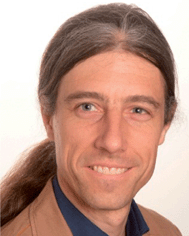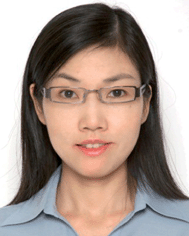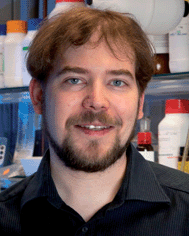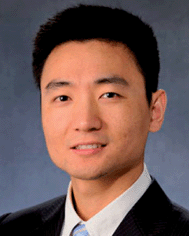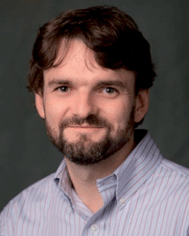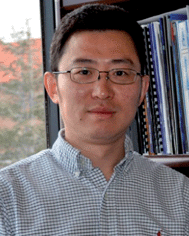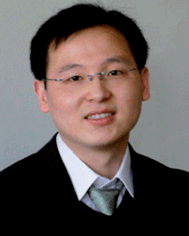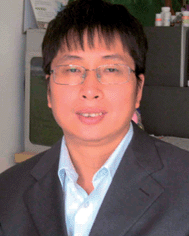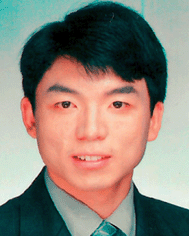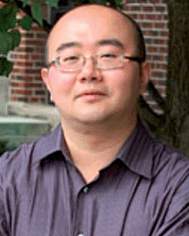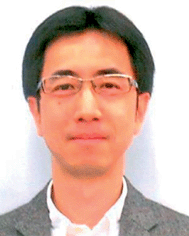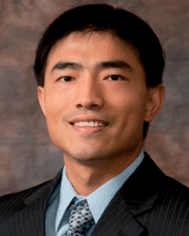DOI:
10.1039/C4TA90043J
(Profile)
J. Mater. Chem. A, 2014,
2, 5953-5964
Profile: Emerging investigators
Akinori Saeki received a Ph.D. in Applied Chemistry from Osaka University in 2007 and was an Assistant Professor at the Institute of Scientific and Industrial Research, Osaka University in 2003–2009. Since 2010, he has been Assistant Professor (tenure track) at the Graduate School of Engineering, Osaka University. He has joined in the Precursory Research for Embryonic Science and Technology (PRESTO) program operated by Japan Science and Technology Agency (JST) from 2009 to 2013. His research interest is the dynamics of short lived reactive species in organic semiconductors.
Aron Walsh is Professor of Materials Theory in the Centre for Sustainable Chemical Technologies at the University of Bath. He also holds a Royal Society Fellowship and a Starting Grant from the European Research Council. Aron gained his B.A. (Mod) and Ph.D. in Chemistry from Trinity College Dublin under Graeme Watson. He then worked at the US National Renewable Energy Laboratory, and later at University College London as a Marie Curie Research Fellow. The focus of the Walsh research group is structure–property relationships in condensed matter, with an emphasis on photoferroics, metastable materials, and electroactive metal–organic frameworks.
Russell Binions completed his first degree (in Chemistry) from the college of St Hild and St Bede, the University of Durham in 2001. He subsequently completed a Ph.D. in 2005 at University College London (UCL). He spent a year working in industry for the Norville Optical Group before returning to UCL in autumn 2005 to complete postdoctoral positions working on thermochromic thin films and zeolite modified gas sensors. He was awarded a Royal Society Dorothy Hodgkin Fellowship in 2008. Dr Binions is currently a Lecturer in Functional in the School of Engineering and Materials at Queen Mary, University of London and an Honorary Senior Research Associate at UCL. He is the author of over 60 peer reviewed journal papers, 6 book chapters and 1 book. His research interests encompass new chemical vapour deposition techniques, metal oxide semiconductor materials, gas sensors, photocatalysis, chromogenic materials, nanocomposite films and energy efficient building materials. In his spare time he enjoys all aspects of music.
Xinbo Zhang joined Changchun Institute of Applied Chemistry (CIAC) as a professor of “Hundred Talents Program” of Chinese Academy of Sciences (CAS) in 2010. He received his Ph.D. degree from CIAC and was granted the CAS Presidential Scholarship Award in 2005. Then he worked as a JSPS and NEDO fellow at National Institute of Advanced Industrial Science and Technology, Japan. His interests mainly focus on functional inorganic materials for energy storage & conversion with fuel cells and batteries, especially lithium-air batteries. He has published more than 80 papers in
Nature Communications,
Angewandte Chemie, Int. Ed.,
Advanced Materials,
Chemical. Society Reviews etc.
Nanfeng Zheng received his B.S. from the Department of Chemistry, Xiamen University in 1998. In 2005, he obtained his Ph.D. degree from the Department of Chemistry, University of California, Riverside. During 2005–2007, he worked as a research associate at University of California, Santa Barbara. He moved to Xiamen University as a full professor in 2007. He is currently a Changjiang Chair professor at Xiamen University. His research interests mainly focus on the development of advanced functional materials for both fundamental research and practical applications, particularly in the fields of catalysis and biology. He has published over 70 peer reviewed articles and has received several awards, including the National Distinguished Young Investigator Award from NSF-China (2009), Chinese Chemical Society-Wiley Young Chemist Paper Award (2009), Chinese Chemical Society Young Chemist Award (2010), Distinguished Lectureship Award from Chemical Society of Japan (2012), Fok Ying Tung Education Foundation Award for Outstanding Young Teachers (2012), and Zasshi-kai Lectureship from Department of Chemistry, the University of Tokyo (2013).
Chad Vecitis is an Assistant Professor of Environmental Engineering in the School of Engineering and Applied Sciences at Harvard University. Dr Vecitis received a B.A. degree (2001) in Chemistry from Johns Hopkins, a Ph.D. degree (2009) in Chemistry from the California Institute of Technology, and completed his post-doctoral research at Yale University. A current research focus in the Vecitis Environmental Technology Lab is the development of novel active porous materials for water, sustainability, energy, and sensor applications.
Shannon Boettcher is currently an Assistant Professor in Chemistry at the University of Oregon. His research interests center on developing inorganic materials for solar energy conversion and storage. Boettcher received his B.A. in Chemistry at the University of Oregon in 2003. He received his Ph.D. in Inorganic Materials Chemistry with Galen Stucky at UC Santa Barbara in 2008 where he was an NSF and UC Chancellor's Fellow. As a Kavli Nanoscience Institute Postdoctoral Scholar, he studied three-dimensional Si structures for solar energy conversion and storage at the California Institute of Technology working with Nate Lewis and Harry Atwater. In 2010, he returned to the University of Oregon and in 2011 was named one of 18 DuPont Young Professors worldwide.
Byeong-Su Kim has been an Associate Professor of the Department of Chemistry and School of Energy Engineering at Ulsan National Institute of Science and Technology (UNIST) since 2009. He received his B.S. and M.S. degrees in Chemistry from Seoul National University. After his Ph.D. in polymer/nanomaterial chemistry from the University of Minnesota in 2007, he worked at MIT for his postdoctoral researches until 2009. His current research interests focus on complex macromolecular systems, including the synthesis and assembly of carbon nanomaterials for energy, and self-assembled responsive block copolymers for biomedical applications.
Christian Müller is an Assistant Professor in Polymer Technology at the Department of Chemical and Biological Engineering of Chalmers Tekniska Högskola. Prior to this appointment, he completed a one-year research fellowship at the Institut de Ciència de Materials de Barcelona (ICMAB-CSIC) and a two-year post-doctoral stay at Linköpings Universitet. He holds a D.Sc. in Materials Science from the Eidgenössische Technische Hochschule (ETH) Zürich (2008), for which he was awarded the ETH medal, as well as an M.Sci. and B.A. in Natural Sciences from Cambridge University (2004). Currently, his research focuses on the use of polymer semiconductors in flexible electronic components such as thermoelectric generators and plastic solar cells.
Bettina Valeska Lotsch is an Assistant Professor at the University of Munich (LMU) and independent group leader at the Max Planck Institute for Solid State Research in Stuttgart, Germany. She studied Chemistry at the Universities of Munich and Oxford, UK, and received her Ph.D. from LMU Munich in 2006 under the supervision of Professor Wolfgang Schnick, specializing in the synthesis and structure elucidation of novel carbon nitride materials. From 2007 to 2008, she conducted postdoctoral research as a Feodor-Lynen fellow in the group of Professor Geoffrey Ozin at the University of Toronto, Canada. Her work was recognized by the E.ON culture prize and the Fast-Track scholarship of the Robert Bosch Foundation. Her research is directed towards the rational design of multifunctional materials, including 2D materials and artificial heterostructures, photonic nanostructures for sensing, and functional frameworks for solar energy conversion.
Gengfeng Zheng obtained his B.S. degree at Fudan University in China (2000), and Ph.D. degree in Chemistry at Harvard University in USA (2006), under the guidance of Prof. Charles Lieber. He was a postdoctoral fellow working with Prof. Chad Mirkin at Northwestern University in USA (2007–2009). He has been a full professor at the Department of Chemistry and Laboratory of Advanced Materials at Fudan University since 2010. His research interests include low-dimensional semiconducting nanomaterials-based surface chemistry, biosensing, cell interface, photoelectrochemical conversion, photocatalysis and energy storage.
Gleb Yushin is a tenured Associate Professor at the School of Materials and Engineering and a Director of the Centre for Nanostructured Materials for Energy Storage at Georgia Institute of Technology. For his contributions to materials science, he has received numerous awards and recognitions, including the prestigious R&D 100 Award, Honda Initiation Grant Award, National Science Foundation CAREER Award, Air Force Office of Scientific Research Young Investigator Award, and several distinctions from the National Aeronautics and Space Administration (NASA), such as the Nano 50 Award. Dr Yushin has co-authored 22 patents and patent applications and multiple publications on energy storage materials, including publications in Science and Nature Materials. His current research is focused on advancing energy storage materials and devices for electronics, transportation and multiple grid applications.
Hyeon Suk Shin is an associate Professor at the Interdisciplinary School of Green Energy, Ulsan National Institute of Science and Technology (UNIST), South Korea. He received his Ph.D. from the Department of Chemistry at POSTECH in 2002. After working as a postdoctoral fellow at the University of Cambridge, UK, and subsequently as a research professor at POSTECH, he joined a new university, UNIST, in 2008. His current research is focused on 2D materials, including graphene, h-BN, transition metal dichalcogenides, and their hybrids.
Jinsong Huang received his Ph.D. degree in Material Science and Engineering from the University of California, Los Angeles in 2007. After serving in Agiltron Inc. as a research scientist for two years, he joined the University of Nebraska Lincoln as an assistant professor in the Department of Mechanical Engineering. He is a recipient of an NSF CAREER Award and DOD Young Investigator Award. His current research interests include solution processed electronic materials for applications in sensing, energy and consumer electronics. Specifically he studies material and device engineering and science for electronic devices including solar cells, photodetectors, transistors, pyroelectric sensors, and electrocaloric cooling.
Jan-Willem Bos is a lecturer in Energy Materials at Heriot-Watt University. He obtained a Cum Laude first degree in Chemistry from the University of Groningen, and came to the UK in 2002 reading for a Ph.D. at the University of Cambridge. After a spell as a Research Associate in the group of Prof. RJ Cava at Princeton University he won a Royal Society of Edinburgh Personal Research Fellowship (held at the University of Edinburgh) before moving to his current post. His current research is focused on the design, synthesis and characterisation of thermoelectric materials with improved waste heat recovery efficiencies.
Kevin Kittilstved is an Assistant Professor at the University of Massachusetts Amherst. After obtaining a B.S. from Gonzaga University, Kevin attended the University of Washington (Ph.D., 2006) under Daniel Gamelin on the electronic structure origins of carrier-mediated magnetic ordering in diluted magnetic oxide semiconductors. Kevin then spent three years at the Université de Genève as a post-doc with Andreas Hauser. After a short post-doc with Daniel Gamelin, Kevin began his current appointment in 2011. Professor Kittilstved's current research program is centered around controlling defects in multifunctional inorganic nanomaterials and molecular clusters for energy applications.
Liangbing Hu received his B.S. in Applied Physics from the University of Science and Technology of China (USTC) in 2002. He did his Ph.D. at UCLA, focusing on carbon nanotube-based nanoelectronics. In 2006, he joined Unidym Inc. as a co-founding scientist. At Unidym, Liangbing's role was the development of roll-to-roll printed carbon nanotube transparent electrodes and device integrations into touch screens, LCDs, flexible OLEDs and solar cells. He worked at Stanford University from 2009–2011, where he worked on various energy devices based on nanomaterials and nanostructures. Currently, he is an Assistant Professor at University of Maryland College Park. His research interests include nanomaterials and nanostructures, roll-to-roll nanomanufacturing, energy storage and conversion, and printed electronics.
Natalie Banerji was born and raised in Geneva (Switzerland), in an international environment fitting her half-Austrian, half-Indian origins. In 2009, she obtained her Ph.D. degree in Physical Chemistry from the University of Geneva under the supervision of Prof. E. Vauthey, about ultrafast electron transfer processes. She then became fascinated with the properties of organic semiconductors during a post-doctoral stay with Nobel laureate Prof. A. J. Heeger at the University of California in sunny Santa Barbara. Currently, she leads her own research team at the Ecole Polytechnique Fédérale de Lausanne, funded by a three year Ambizione grant ($600
![[thin space (1/6-em)]](https://www.rsc.org/images/entities/char_2009.gif)
000) from the Swiss National Science Foundation. When not braving the wind in the Swiss mountains, she works hard to understand the detailed mechanisms involved in organic electronics, organic solar cells and artificial photosynthesis. She uses a variety of spectroscopy, photocurrent and terahertz techniques.
Michelle Moram completed a B.Sc. in Chemistry at University College Cork, followed by a Ph.D. in Materials Science at the University of Cambridge on defect reduction in III-nitride semiconductors, winning the BACG Young Scientist of the Year award. This was followed by independent fellowships, including a Royal Society University Research Fellowship on new functional nitride materials, then an appointment to a Lectureship at the Dept. Materials at Imperial College London in 2011. Recent awards include the IOM3 Silver Medal and a 2012 Leverhulme Research Leadership award. She now leads the Functional Nitrides research group, working on the discovery and development of new nitride-based device materials.
Nico Bruns is an Associate Professor of Macromolecular Chemistry at the Adolphe Merkle Institute of the University of Fribourg, Switzerland. He studied Chemistry at the Universities of Freiburg (Germany) and Edinburgh (Scotland) and graduated from the University of Freiburg as Diplom-Chemiker in 2003. He received his Ph.D. from the same University in 2007 under the supervision of Prof. Jörg Tiller and Prof. Rolf Mülhaupt. From 2007 to 2008 he was a postdoctoral researcher at the University of California, Berkeley, working with Prof. Douglas S. Clark. He then joined the University of Basel, Switzerland, where he led a research group as Habilitand from 2008 to 2013. He received a scholarship from the German National Academic Foundation, a Marie Curie Fellowship, a Holcim Stiftung Wissen Fellowship, as well as the Pfizer Research Award for Young Scientists. In 2013 he was awarded a Swiss National Science Foundation Professorship, which enabled him to take up his current position. His research interests include enzyme-catalyzed controlled/living radical polymerizations (ATRPases), protein cages and polymersomes as nanoreactors, and polymer–protein hybrid materials with the capability to self-report damage.
David Payne is a Lecturer and Royal Society University Research Fellow in the Department of Materials, Imperial College London. His research is concerned with the synthesis and characterisation of oxide materials, with aims ranging from the applied to the fundamental. He principally uses photoelectron spectroscopy to interrogate the electronic structure of oxides in close collaboration with fantastic theoreticians. He is currently in the process of commissioning a state-of-the-art high-pressure photoelectron spectrometer. This work could only be done with his research group of whom he is immensely proud.
Richard Robinson is an Assistant Professor at Cornell University. His research is centered on understanding the fundamental physics of nanomaterials, and applying chemical and structural transformations to engineer the properties of nanoparticles for energy applications. His group is targeting new materials for lithium storage, thermoelectrics, and catalysis. Richard received his B.S. and M.S. in Mechanical Engineering from Tufts University. Then, after several years at Accenture Technology Consulting, he returned to school and received his Ph.D. in Applied Physics from Columbia University, under Irving Herman. During that time he worked briefly at Bell Laboratories in the Physical Research Laboratory. Richard's postdoctoral fellowship was at the University of California, Berkeley/LBNL in the research group of Paul Alivisatos. There, he worked on nanoparticle synthesis and chemical transformations of nanoparticles. In 2008 Richard began a faculty position at Cornell University in the Materials Science Department, and began work on nanomaterials for energy applications. He has won a number of awards including the 3M Non-tenured Faculty Award, the NSF CAREER award, and the R&D 100 Award.
Rong Xu received her Ph.D. degree in Chemical Engineering (2004) from the National University of Singapore. She joined the School of Chemical & Biomedical Engineering, Nanyang Technological University in the same year as Assistant Professor and she was promoted to Associate Professor in 2010. Her main research interests include the development of semiconductor photocatalysts for the production of solar fuels
via water splitting and CO
2 reduction, and the designing of functional materials for environmental applications.
Felix Schacher was born in Lichtenfels, Germany, in 1980. After finishing his graduate studies in Chemistry at the University of Bayreuth, Germany in 2006, he completed his doctoral work under supervision by Prof. Axel H. E. Müller in 2009. His thesis focused on living anionic polymerization techniques and nanostructured systems based on block copolymers in the bulk and in solution. Afterwards, he joined the group of Prof. Ian Manners as a DAAD postdoctoral fellow, working on the synthesis and self-assembly of organometallic block copolymers. Since 2010, he has been a junior professor at the Friedrich-Schiller-University Jena, Germany. His research interests are polymer synthesis, self-assembly of polymer-based materials, and different characterization techniques related to block copolymer nanostructures.
Dwight Seferos attended Western Washington University, completing a B.S. degree in 2001. He entered the graduate school at the University of California, Santa Barbara where he worked under the supervision of Guillermo Bazan. After completing a Ph.D. in 2006, Seferos moved to Northwestern University where he was an American Cancer Society Postdoctoral Fellow with Chad Mirkin. In 2009, Seferos began his independent laboratory in the Chemistry Department at the University of Toronto. He has authored or coauthored over 50 publications and has more than 10 patents and patent applications. Since beginning his independent career he has been recognized with a DuPont Young Professor Grant (2011), Ontario Early Research Award (2011), Canada Research Chair (2012), and an Alfred P. Sloan Research Fellowship (2013).
Shenqiang Ren obtained his Ph.D. in Materials Science at the University of Maryland, College Park (USA), and worked as a postdoc fellow at Massachusetts Institute of Technology (MIT) before his current position. He is Assistant Professor of Chemistry at the University of Kansas (USA), leading the renewable and emerging nanomaterials (REN) group, working on earth-abundant materials chemistry and sustainable energy nanotechnologies, including energy harvesting nano-photovoltaics and high energy density nanomagnets.
Steven McIntosh is an Associate Professor of Chemical Engineering at Lehigh University, Bethlehem, PA, USA. He received his Bachelor of Engineering with 1st class honors from the University of Edinburgh, UK, in 1999 and his M.S. and Ph.D. in Chemical Engineering from the University of Pennsylvania, USA, in 2001 and 2004, respectively. His Ph.D. research was conducted under the supervision of Prof. Raymond J. Gorte and Prof. John M. Vohs. He spent a postdoctoral period between 2004 and 2005 in the Inorganic Materials Science group at the University of Twente, NL, working with Prof. Henny J. M. Bouwmeester. Dr McIntosh was an assistant professor at the University of Virginia, USA, from 2006 to 2010, prior to joining the faculty at Lehigh University. His research areas are in solid state ionics, electrochemistry, and catalysis. His research group worked closely with the instrument scientists and support staff at the POWGEN beam line, Spallation Neutron Source, Oak Ridge National Laboratory, TN, USA, to develop the high temperature, controlled atmosphere,
in situ capabilities for this instrument.
Wei Zhang obtained his B.Sc. from Peking University in 2000. He pursued his graduate studies at the University of Illinois at Urbana-Champaign under the supervision of Prof. Jeff Moore. After obtaining his Ph.D. degree in 2005, he moved to MIT to conduct postdoctoral research with Prof. Tim Swager. In 2008, he started his independent career in the Department of Chemistry and Biochemistry at University of Colorado-Boulder. His main research interest is to develop organic functional materials based on novel 2-D and 3-D molecular architectures that are constructed through dynamic covalent chemistry.
Xinliang Feng is a distinguished group leader at the Max-Planck Institute for Polymer Research and professor at the Shanghai Jiao Tong University. His current scientific interests include graphene, two-dimensional nanomaterials, organic conjugated materials, and carbon-rich molecules and materials for electronic and energy-related applications. He has published more than 180 research articles. He has been awarded several prestigious prizes including the IUPAC Prize for Young Chemists (2009), European Research Council Starting Grant Award (2012), and Journal of Materials Chemistry Lectureship Award (2013). He is an Advisory Board Member for
Advanced Materials,
Journal of Materials Chemistry A, and
Chemistry – An Asian Journal.
Jun Yang received his Ph.D. in Chemical and Biomolecular Engineering in 2006 from the National University of Singapore. After postdoctoral research at Boston College and the University of Toronto, he joined the Institute of Bioengineering and Nanotechnology, Singapore in 2007. In 2010, he moved to the Institute of Process Engineering, Chinese Academy of Sciences as the Group Leader of Materials for Energy Conversion and Environmental Remediation (MECER). His main research interests include (i) applied catalysis, (ii) nanocomposites for energy conversion, (iii) synthesis and application of novel nanocrystalline materials, and (iv) separation techniques.
Yonghui Deng received his B.S. in Chemistry from Nanchang University (2000) and Ph.D. in Polymer Chemistry & Physics from Fudan University (2005). He worked as a postdoctoral researcher with Prof. Dongyuan Zhao (2005–2007), and after that, he was promoted as an Associate (2007) and full Professor (2011) in Fudan University. He has coauthored over 60 scientific papers with total citations of over 2500. His research interests include core–shell nanomaterials, functional porous materials, and their applications in catalysis, sensors, and separation,
etc.
Yue Wu joined Purdue University as an Assistant Professor of Chemical Engineering in August 2009. He obtained his B.S. degree in Chemistry at the University of Science and Technology of China, Hefei, Anhui, P.R. China in 2001, with the Best Undergraduate Thesis Award. He obtained his Ph.D. degree in Chemistry at Harvard University (07/2001–06/2006). He then received a Miller Fellowship for postdoctoral work in Chemistry at the University of California at Berkeley (08/2006–07/2009). His Ph.D. research at Harvard University focused on semiconductor nanowires and nanowire heterostructures for functional nanoelectronic memory and logic devices. At Berkeley, he advanced the science of nanocrystal-based photovoltaic solar cells, especially those made from non-toxic and abundant materials. His independent research at Purdue on nanostructured materials for thermoelectric applications has gained recognition by peers worldwide, which has led to 17 conference presentations, 6 invited talks at industrial companies and federal government research labs, and 18 invited colloquium/seminar presentations at other universities. His publication H-factor is 22 for 43 peer-reviewed publications, with over 4600 citations.
Zhiqun Lin is an Associate Professor in the School of Materials Science and Engineering at Georgia Institute of Technology. He received his Ph.D. in Polymer Science and Engineering from the University of Massachusetts, Amherst in 2002. His research interests include polymer solar cells, dye-sensitized solar cells, semiconductor organic–inorganic nanocomposites, photocatalysis, quantum dots (rods), conjugated polymers, block copolymers, polymer blends, hierarchical structure formation and assembly, surface and interfacial properties, multifunctional nanocrystals, and Janus nanostructures. He is a recipient of an NSF Career Award.
Guihua Yu is an Assistant Professor of Materials Science at the University of Texas at Austin. He received his B.S. degree with the highest honor in Chemistry from the University of Science and Technology of China, and earned his Ph.D. in Chemistry at Harvard University with Professor Charles M. Lieber in 2009. Before starting at Austin in the fall of 2012, Dr Yu did three years of postdoctoral research at Stanford University. His research is focused on the novel synthesis and self-assembly of new materials with rationally designed nanostructures and properties for energy and environmental science and technologies, and the fundamental understanding of the structure–property–performance relationship of materials at the molecular level.
Serena Corr obtained her B.A. (2002) and Ph.D. (2007) in Chemistry from Trinity College Dublin. She completed her Ph.D. work with Professor Yurii Gun'ko, where she developed new magnetic materials for biomedical applications. In 2007, she began working as a postdoctoral researcher in the Materials Research Laboratory with Professor Ram Seshadri at the University of California, Santa Barbara. After a lectureship at the University of Kent, Serena joined the School of Chemistry at the University of Glasgow as a lecturer in Physical Chemistry in January 2013. Her research focuses on the design, synthesis and full characterisation of functional nanomaterials whose applications include insertion electrodes for energy storage, biomedical diagnostics and therapeutics and electronically responsive materials. Using a variety of synthetic approaches and a range of characterisation techniques, her group is particularly interested in understanding the intimate structure–property interplay in functional nanomaterials. A current major strategy is the development of lower energy, quicker synthetic routes to highly crystalline nanoparticles using green routes such as microwave approaches, which drive down reaction times from days to minutes, and the development of molecular precursors to afford novel routes to nanostructured functional materials.
|
| This journal is © The Royal Society of Chemistry 2014 |
![[thin space (1/6-em)]](https://www.rsc.org/images/entities/char_2009.gif) 000) from the Swiss National Science Foundation. When not braving the wind in the Swiss mountains, she works hard to understand the detailed mechanisms involved in organic electronics, organic solar cells and artificial photosynthesis. She uses a variety of spectroscopy, photocurrent and terahertz techniques.
000) from the Swiss National Science Foundation. When not braving the wind in the Swiss mountains, she works hard to understand the detailed mechanisms involved in organic electronics, organic solar cells and artificial photosynthesis. She uses a variety of spectroscopy, photocurrent and terahertz techniques.

